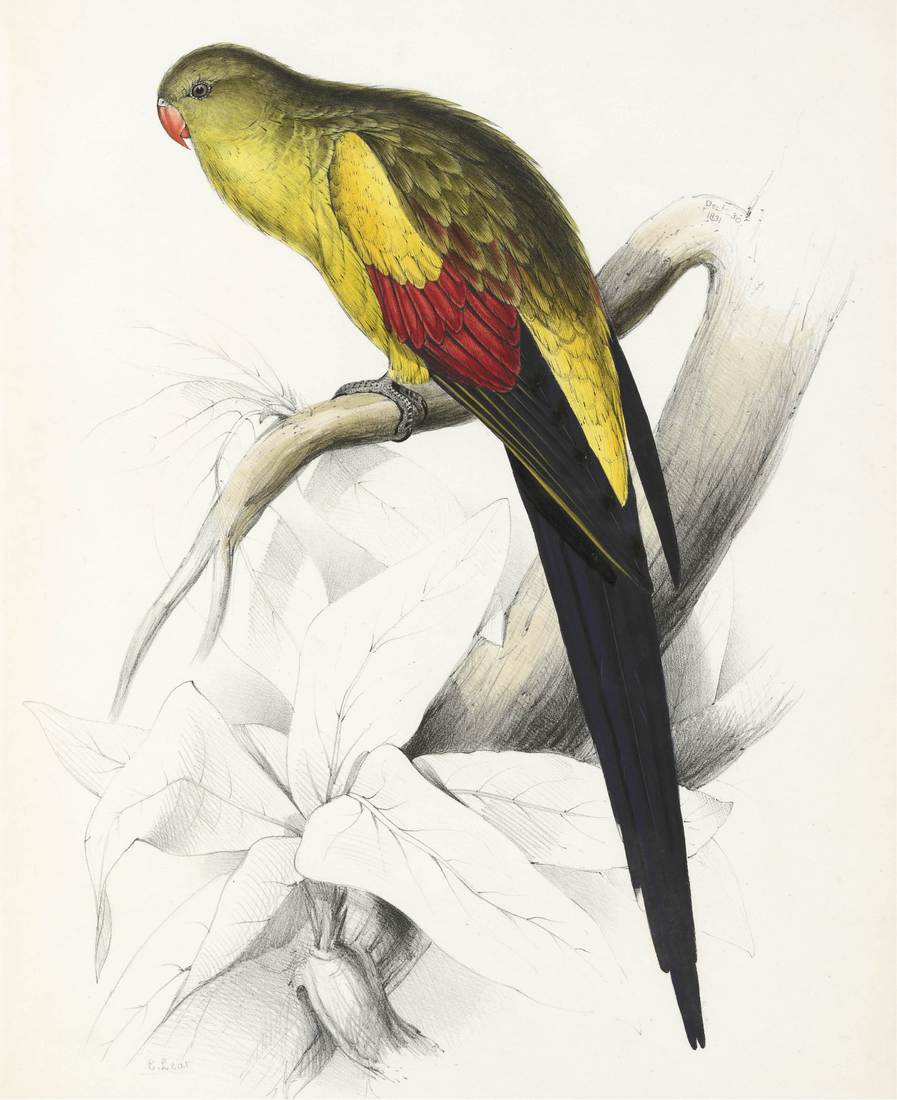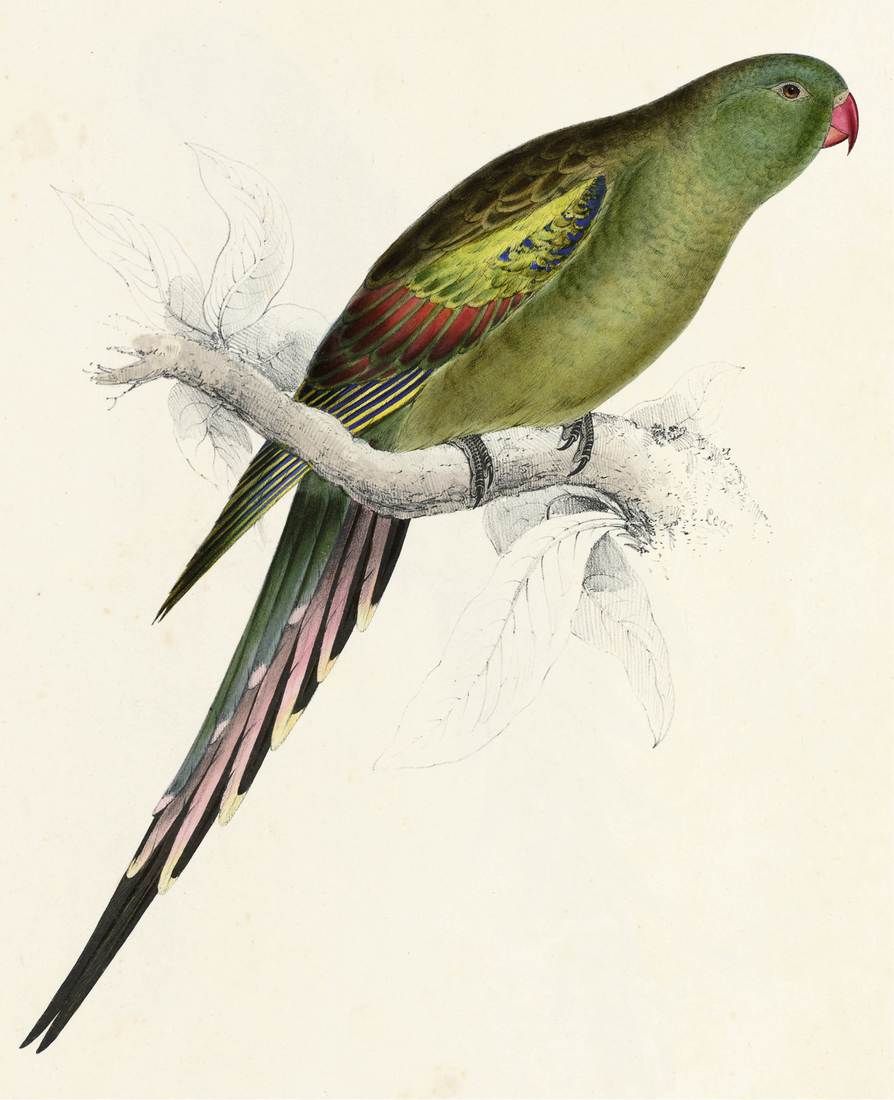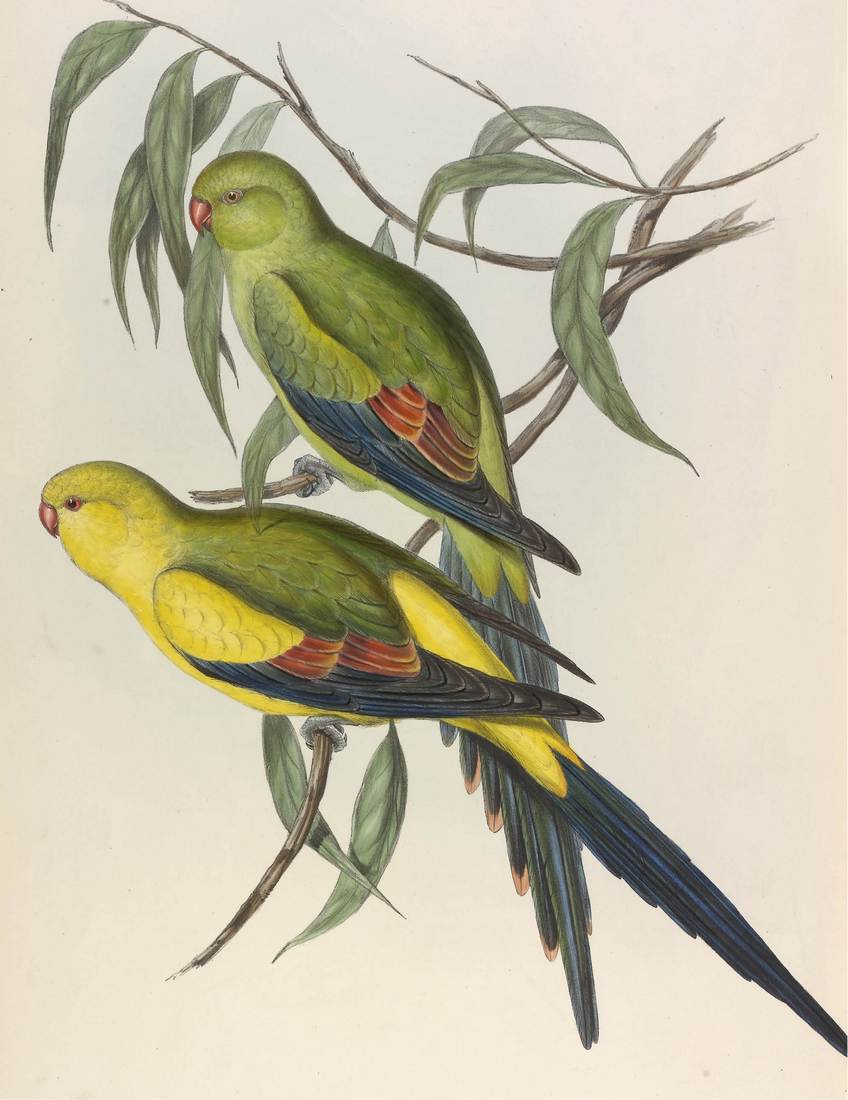Regent Parrot
Polytelis anthopeplus
Edward Lear was the first to describe the species, in 1831.
Polytelis is derived from the Greek poluteles extravagant or lavish; anthopeplus combines the Greek anthos bloom with peplos cloak, in reference to the salmon-pink secondary wing feathers or the pink-tinged tail of the Western Australian subspecies.

Edward Lear, Palaeornis melanura (Black-tailed Parrakeet) 1831 (adult male)
Author’s note: Lear only drew parrots from life—in the gardens of the Zoological Society of London or in the menageries of the wealthy. This male was in the possession of Benjamin Leadbeater, a well-known London dealer in natural history specimens. Lear also illustrated the female (see below), then not recognised as belonging to the same species.

Edward Lear, Palaeornis anthopeplus (Blossom-feathered Parrakeet) 1831 (adult female)
Author’s note: This illustration is the first published of the species. It appeared earlier in Lear’s book than the male (see above), which was given a different name. Hence, the species bears the name assigned to the female.

John Gould (artist), Henry Constantine Richter (lithographer), Polytelis melanura (Black-tailed Parrakeet) 1848
(adult female, above; adult male, below)
Author’s note: Gould’s birds belong to the subspecies westralis, from south-western Western Australia, which is greener than the subspecies that occurs in south-eastern Australia.




